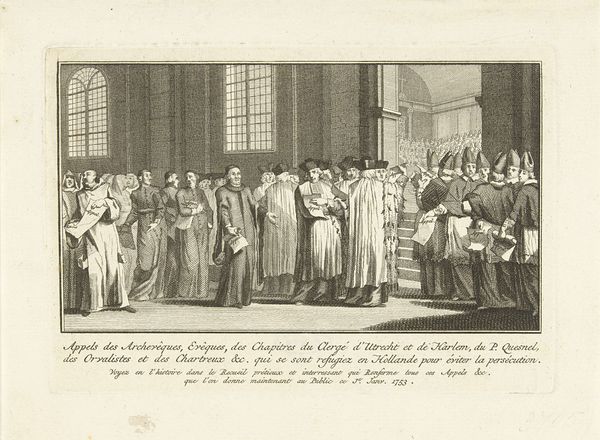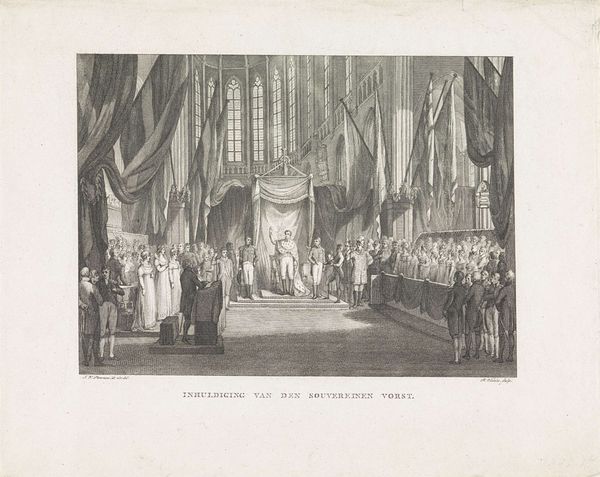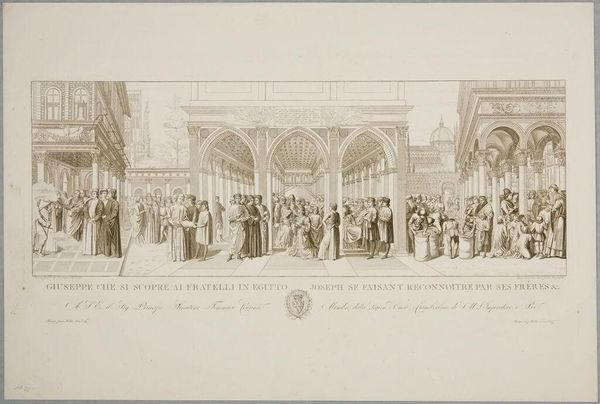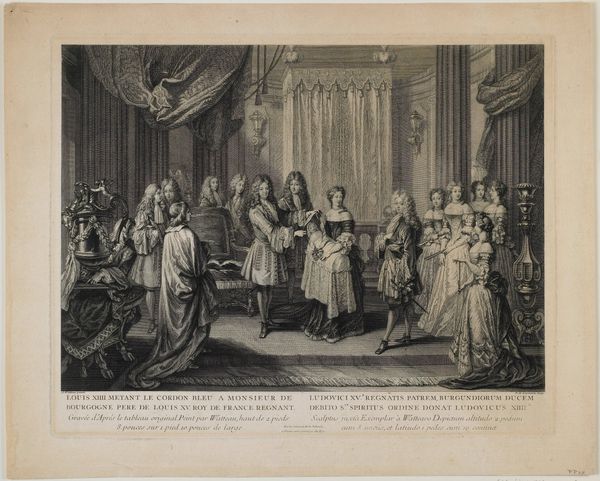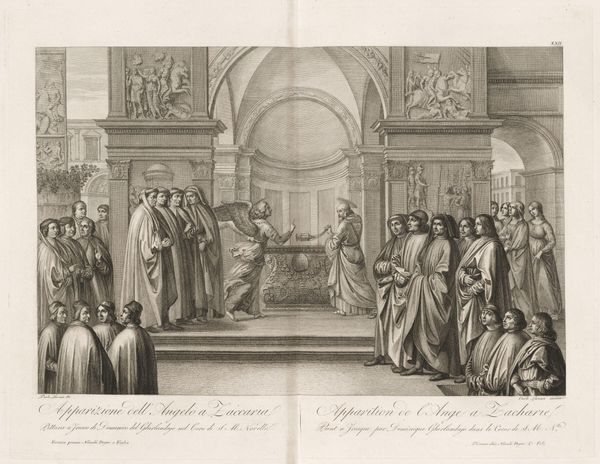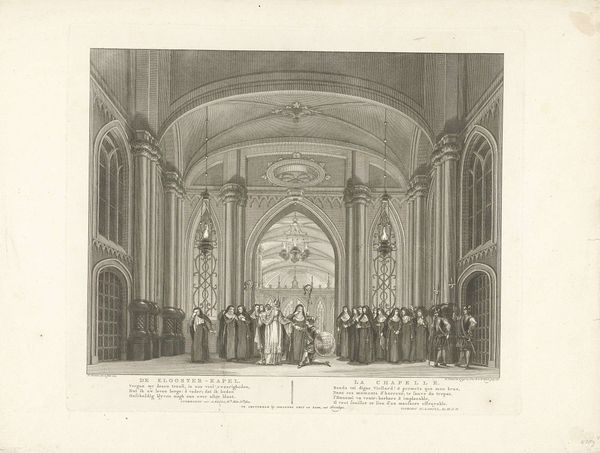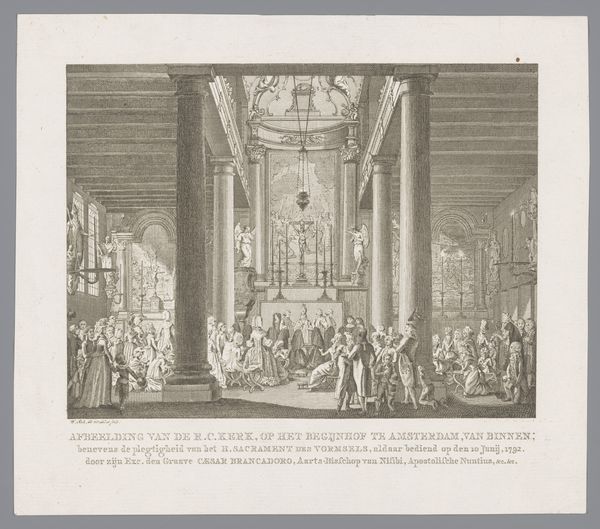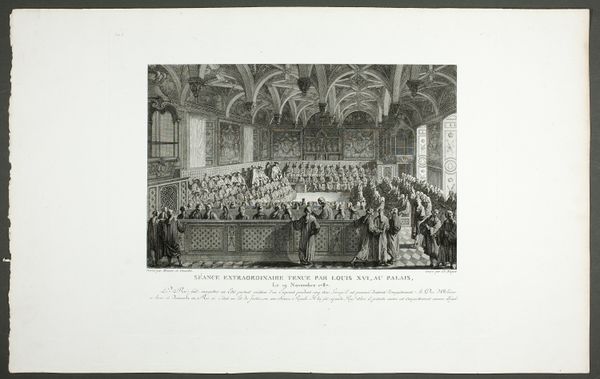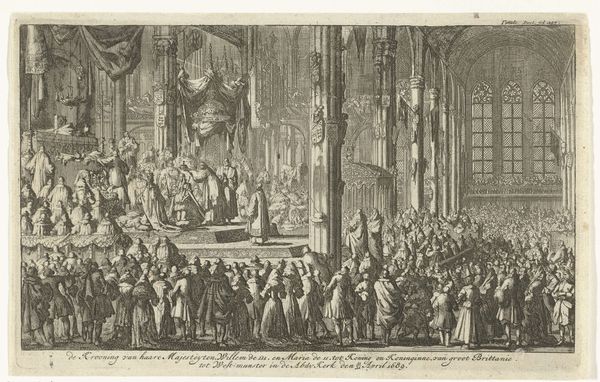
#
light pencil work
#
photo restoration
#
wedding photography
#
old engraving style
#
archive photography
#
historical photography
#
old-timey
#
pen-ink sketch
#
19th century
#
celebration photography
Dimensions: height 381 mm, width 533 mm
Copyright: Rijks Museum: Open Domain
Curator: This engraving, "Huwelijk van Napoleon Bonaparte en Marie Louise van Oostenrijk," thought to be created between 1792 and 1829 by Parfait Augrand, captures a momentous historical occasion. The linear precision achieved by Augrand is captivating. Editor: My immediate impression is of theatrical staging. The figures are neatly arranged, almost like actors on a stage, bathed in what looks like, metaphorically at least, the 'limelight' of history. Curator: The composition is cleverly constructed. Note the architectural frame—those curtains draped overhead, the pillars rising up. It’s all very balanced. The horizontality of the audience at the rear contrasted with the verticality of the wedding ceremony creates an engaging spatial dynamism. Editor: Absolutely. And all eyes are drawn towards the couple at the center. Marriage, particularly for royalty, carries such weight—dynastic, political. The symbolic transfer of power is clearly represented by the central figures. There is an echo here of classic empire building, with both male virility and inherited right presented as paramount. Curator: Yes, but have you considered how Augrand subtly breaks the uniformity? The subtle deviations in the crowd's gaze direct our own focus toward essential formal elements. Editor: True. While there’s formality, there’s also an interesting range of individual expression, however faint. Each individual contributes to a powerful narrative that reflects shared power structures. I find myself pondering what such a propagandistic symbol actually MEANS at this point in history. Curator: Exactly! It pushes us to deconstruct its deeper aesthetic, even its societal intentions as intended by Augrand through representational precision and aesthetic coherence. Editor: It makes me consider the continuity of these types of symbols over centuries—how power represents itself visually. Food for thought. Curator: Indeed; there's much to consider within Augrand’s structured portrayal of power and design here.
Comments
No comments
Be the first to comment and join the conversation on the ultimate creative platform.

